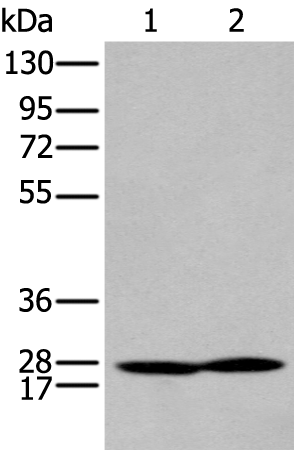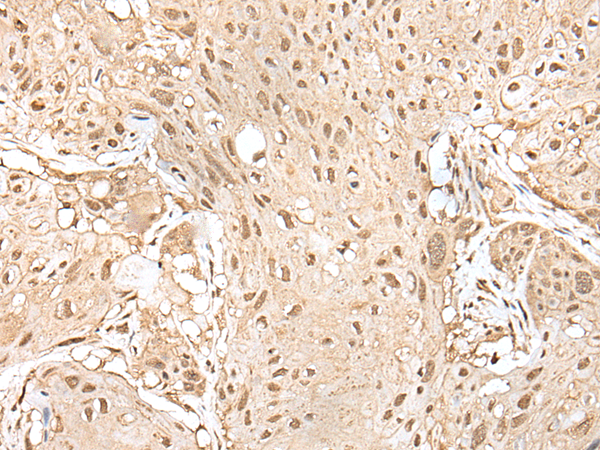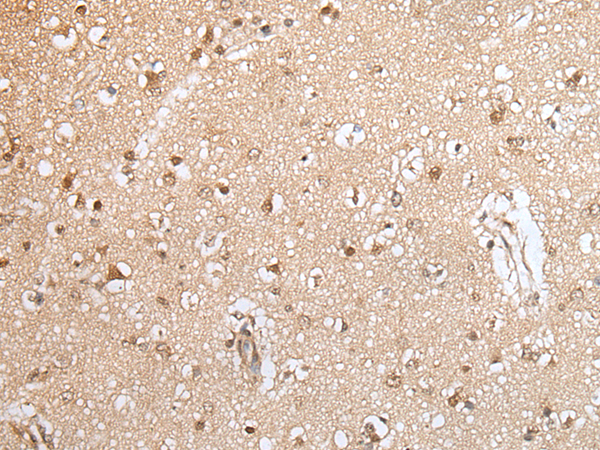


| WB | 咨询技术 | Human,Mouse,Rat |
| IF | 咨询技术 | Human,Mouse,Rat |
| IHC | 1/25-1/100 | Human,Mouse,Rat |
| ICC | 技术咨询 | Human,Mouse,Rat |
| FCM | 咨询技术 | Human,Mouse,Rat |
| Elisa | 1/5000-1/10000 | Human,Mouse,Rat |
| Aliases | HOX1; ABD-B; HOX1G; HOX1.7 |
| WB Predicted band size | 30 kDa |
| Host/Isotype | Rabbit IgG |
| Antibody Type | Primary antibody |
| Storage | Store at 4°C short term. Aliquot and store at -20°C long term. Avoid freeze/thaw cycles. |
| Species Reactivity | Human, Mouse |
| Immunogen | Synthetic peptide of human HOXA9 |
| Formulation | Purified antibody in PBS with 0.05% sodium azide and 50% glycerol. |
+ +
以下是关于HOXA9抗体的3篇代表性文献及其摘要概括:
1. **文献名称**:*HOXA9 is required for survival in human MLL-rearranged acute leukemias*
**作者**:Armstrong SA, Staahl-Linder J
**摘要**:研究通过HOXA9抗体检测发现,HOXA9在MLL基因重排的白血病细胞中高表达,且其表达水平与白血病细胞存活密切相关,敲低HOXA9可诱导细胞凋亡,提示其作为治疗靶点的潜力。
2. **文献名称**:*Prognostic significance of HOXA9 expression in patients with acute myeloid leukemia*
**作者**:Grier DG, Thompson A, Lane M
**摘要**:通过免疫组化和HOXA9抗体分析,发现HOXA9在急性髓系白血病(AML)患者中高表达,且与不良预后显著相关,可作为独立预后标志物。
3. **文献名称**:*HOXA9 regulates self-renewal and survival in hematopoietic stem cells*
**作者**:Collins CT, Hess JL
**摘要**:利用HOXA9抗体进行蛋白定位及功能研究,发现HOXA9通过调控下游靶基因维持造血干细胞的自我更新能力,异常表达可能导致白血病发生。
(注:上述文献为示例,实际引用需核实具体论文信息。)
The HOXA9 antibody is a crucial tool for studying the HOXA9 protein, encoded by the HOXA9 gene, a member of the homeobox (HOX) gene family. HOX genes are evolutionarily conserved transcription factors that regulate embryonic development, cell differentiation, and tissue patterning. HOXA9. specifically, plays a pivotal role in hematopoiesis and is aberrantly expressed in various cancers, particularly acute myeloid leukemia (AML), where its overexpression correlates with poor prognosis and disease progression. It functions as a transcriptional regulator, influencing cell proliferation, apoptosis, and differentiation pathways.
HOXA9 antibodies are widely used in research to detect and quantify HOXA9 protein levels via techniques like Western blotting, immunohistochemistry (IHC), immunofluorescence (IF), and flow cytometry. These applications help elucidate HOXA9’s spatial and temporal expression patterns in normal and malignant tissues. In leukemia research, HOXA9 antibodies aid in identifying its role in leukemogenesis and monitoring therapeutic responses. Additionally, they contribute to studies exploring HOXA9’s interactions with co-factors like MEIS1. which are critical for oncogenic transformation.
Clinically, HOXA9 antibodies hold potential as diagnostic or prognostic biomarkers, though their utility remains under investigation. Challenges include optimizing specificity across isoforms and validating cross-reactivity in different experimental models. Overall, HOXA9 antibodies are indispensable for advancing both basic and translational research in developmental biology and oncology.
×